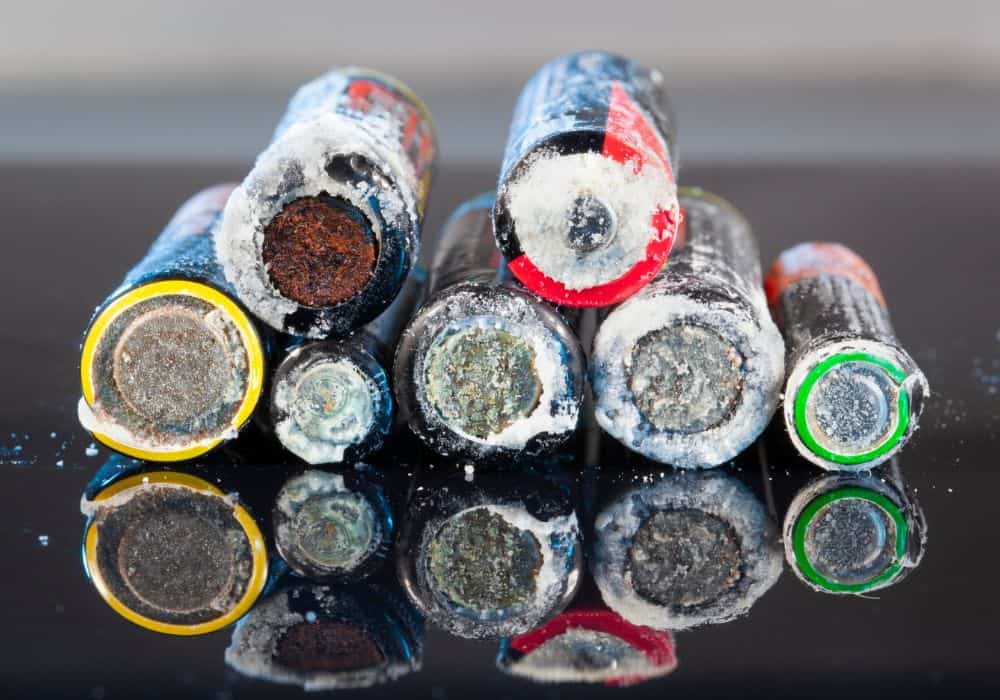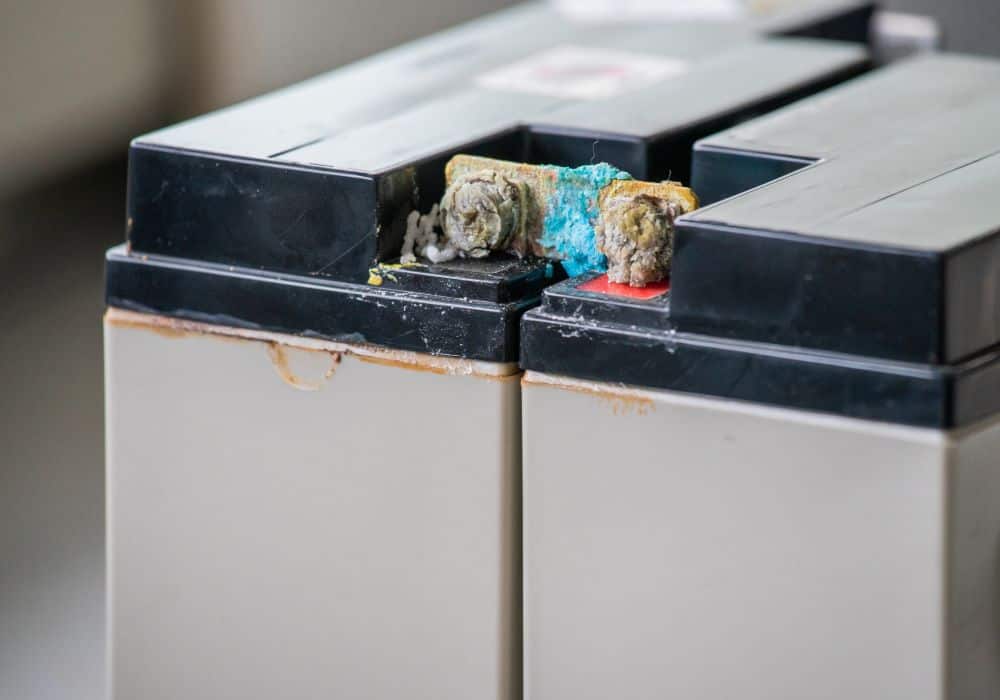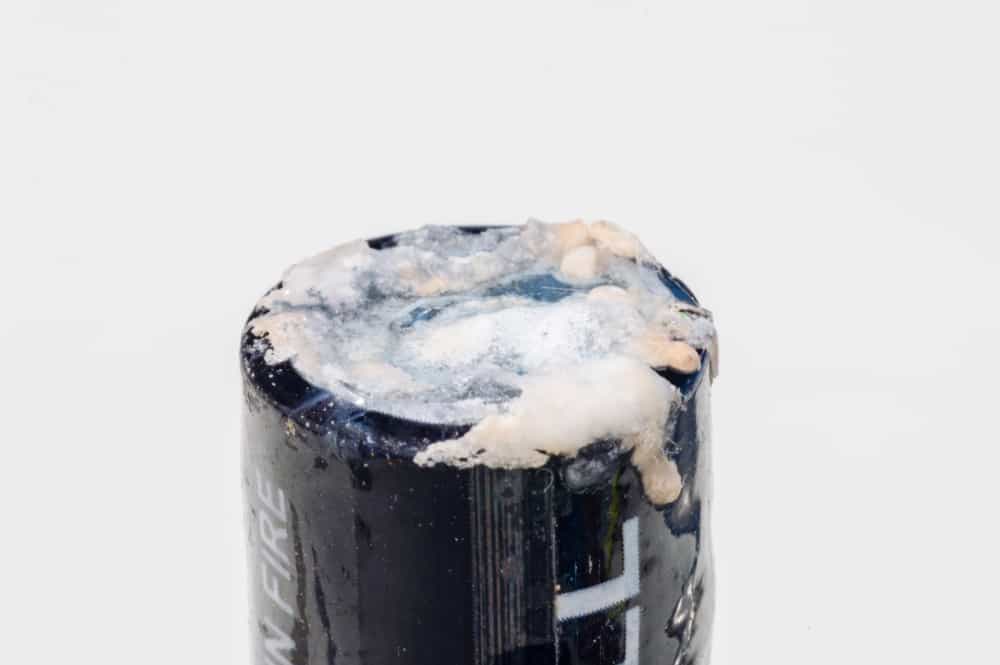You are not alone if you do not know what battery acid looks like, especially if you do not handle batteries. So, it can be a big problem if you have an unnoticed battery leak. If you accidentally touch the liquid, it can prove harmful.
How do you tell battery acid apart from other liquids in your car or devices that use batteries? There are different types of battery acid, and knowing the color and what affects it can be an excellent place to start. This article explains the color of battery acid and some factors that affect its color.
Table of Contents
Typical Color of Battery Acid
A battery typically has acid with a clear color. If you buy a new battery and cause it to leak, you will notice that the acid color is like water. Note that you must not touch it, regardless of how harmless it may look.
However, the type of battery and usage can affect the color of the acid. While a brand-new battery has acid that is as clear as water, a battery you have used may have a slightly cloudy color. The longer you use the battery, the acid becomes cloudier or dirtier.
You must also consider the battery type. Some batteries have a yellowish tint in the acid they contain, so they do not look clear. They may even look dirty, although it is the acid’s natural color. The acid color deepens and tends towards brown the older the battery gets.
Other Battery Types
A few battery types, such as lead-acid batteries, have brown or black acid. You can attribute the color of lead batteries to the chemical composition and compounds of the acid.
Other battery types, such as nickel-cadmium batteries, have acids with a greenish tint. As with the others, the color comes from the acid’s chemical compounds.
However, AAA batteries and other similar types may have acid in powder form. The same is true for an AA battery. These batteries are li-ion or lithium-ion batteries, so they are slightly different from car batteries and similar types.
Li-ion batteries do not typically leak because of the presence of a protective layer to prevent such a leak. They also have a low weight and high energy density. But over time and with constant usage, such batteries may become damaged or wear out.
Consequently, they leak their acid in the form of white powder. If you are unfamiliar with the fact that some batteries have powder-like acid, you may accidentally touch it and cause injury. The white powder is lithium peroxide.
How You Can Tell It Is Battery Acid

If you are unsure of the color of the acid in the battery you have, there are other ways to identify whether or not it is battery acid. The color is one of many distinguishable characteristics of the acid. Since there is no universal color, it is best to have other ways to identify this acid.
Smell
Battery acid has a strong sulfuric acid smell. Sulfur smells like rotten eggs, which is quite powerful and offensive. If you get that strong odor, it may indicate that the battery is leaking. It is best to check the battery to determine whether or not there is a compromise that needs fixing.
Feel
If your skin comes in contact with battery acid, it will burn and cause irritation, the same way other acids affect the skin.
What Changes the Color of Battery Acid?

As mentioned, battery acid may be clear when the battery is new. However, this can quickly change as you use the battery. But what may change its color? It depends on the battery application, age, and whether or not it becomes defective.
- Application: How often you use the battery and its applications can quickly change the color of the acid. It is typical to see the acid is light-colored, but a murky grey is not a cause for worry. But a dark grey or black color may mean you do not use the battery well or it is poorly maintained.
- Age: Another factor that affects the color of the acid is age. The older a battery gets, the darker the acid becomes. If you find a battery leaking dark liquid, the color is not typical but may indicate it is old. Take that as a sign to replace the battery.
- Damage: A defective battery usually has dark-colored acid because of contamination. Also, corrosion or overcharging a battery can quickly damage it and change the acid color and smell. If you suspect a battery is damaged, it is best to dispose of it properly, especially if it leaks.
The Importance of Recognizing Battery Acid
The color of battery acid helps people know it when they see it. And that is an important factor because of the danger involved in contact with the acid. Most people cannot tell when they see such an acid, whether on the floor or in a container.
Every light grey or cloudy liquid around a battery does not always indicate it is battery acid. But you may see a clear liquid like water and mistake it as harmless. The same applies if you see a white powdery substance on the floor or any surface.
It is crucial to keep any defective or old battery away from people who cannot recognize the hazards. This is especially true for children and pets because of the strength of the acid and possible ingestion, skin irritation, or inhalation.
How to Deal With Battery Acid Burn?
The first step in the case of battery acid burn is to put that part of your skin in a lot of cold water, but running water is usually ideal.
Allow the water to flow over the skin for a few minutes to wash off the acid residue and reduce the burning sensation. Rubbing a mixture of baking soda and water on the affected area also neutralizes the effect.
Lemon juice and white vinegar may also help to curb the burns and effect of the acid on the skin. But you must get medical help, especially if the burn is extensive.
Ensure you use protective clothing and goggles if you must work with battery acid to prevent burns or blindness. Chemical burns can be extensive and painful, so early protection and prevention are crucial.
Takeaway
Typical battery acid has a transparent color because of a lack of contamination. But with regular usage, the color can turn to cloudy gray; however, this color is normal and not a cause for worry.
Note that some batteries have a different color and composition, such as yellow or being in powdery form. This difference lies in the chemical composition and battery type. The bottom line is to keep away from a damaged or leaking battery; dispose of it correctly for safety.
